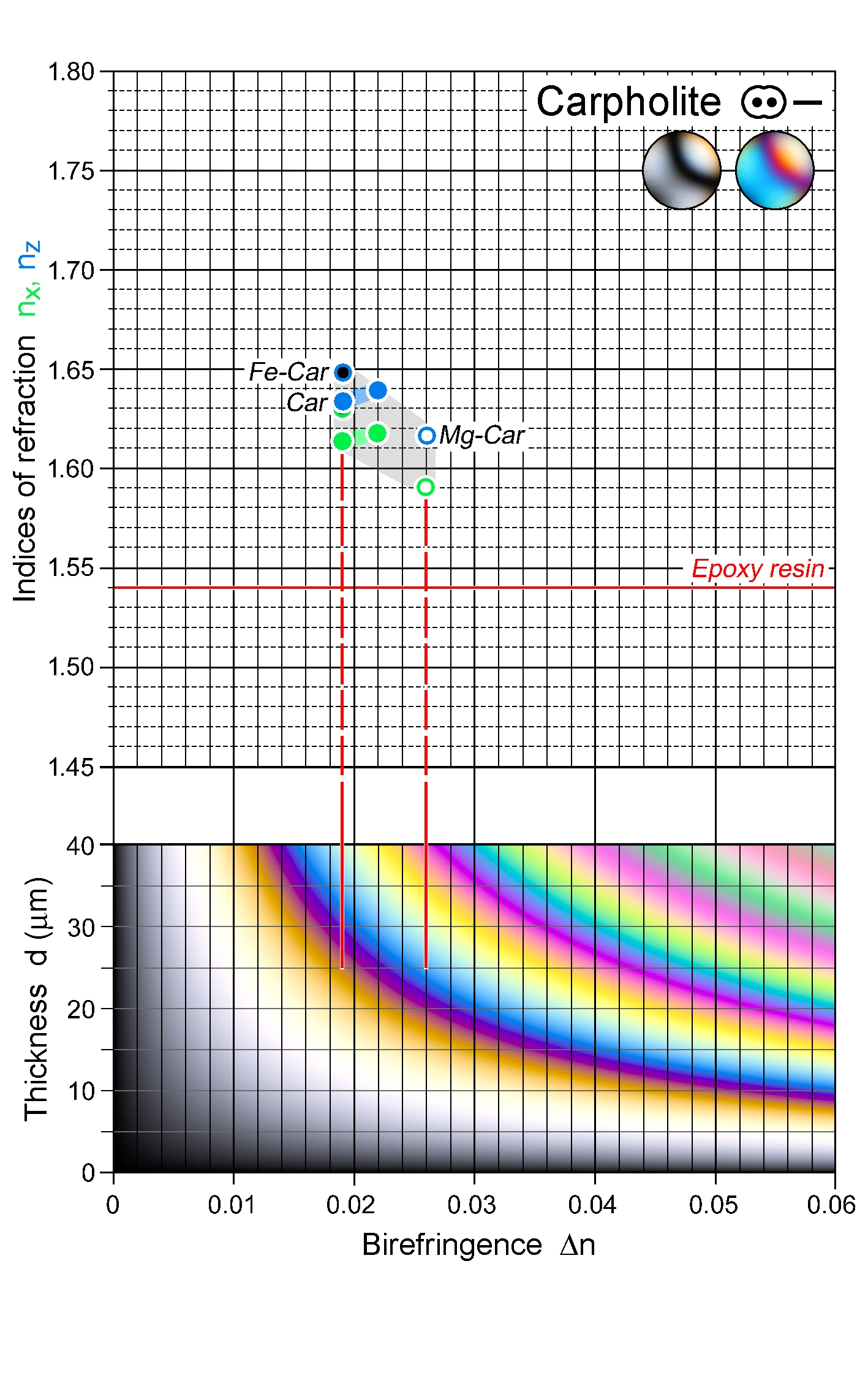|
| Formula | (Mn,Mg,Fe)Al2Si2O6(OH)4 |
| | Optic class & sign | Biaxial negative |
| | Optical orientation | X = b, Y = a, Z = c |
| | Optical plane | (100) |
| | Relief | Moderate-positive |
| | Refractive indices | nx = 1.611 -1.628
|
|
ny = 1.627 -1.644
|
|
nz = 1.630 -1.647
|
|
| n increases with Fe |
| | Birefringence (max.) | 0.019 - 0.022 |
| | | - |
| | Optic Angle
| 2Vx
= 50 - 87° |
| | 2Vz
|
| | Sign of elongation | Length-slow, l (+) |
| | Interference figure | |
| | Colour / pleochroism | X: pale yellow to greenish; Y: pale yellow Z: colourless or pale blueish to blueish green; absorption X ≥ Y > Z |
| | Zoning | |
|
|
| Form | Habit | Acicular, fibrous, radiating aggregates |
| | | Surface | Subhedral to anhedral |
| | Cleavage | {010} perfect; (110) indistinct, at 68 and 112° |
| | Twinning | {100} |
| | Extinction | Straight to cleavages and {110} faces in sections ∥ c; straight to {010} cleavage and symmetrical to (110) cleavage and faces in sections orthogonal to c |
|
|
| Reaction textures | |
| | Alteration / decomposition | Chlorite, sudoite |
|
|
| Occurence | Ign | |
| | | Met | Low-grade metamorphic phyllites and schists; ferrocarpholite and magnesiocarpholite are restricted in their occurrence to low-temperature, high-pressure rocks (> 7 bar), Mn-carpholite to low pressures. |
| | | Sed | |
| | | Hyd | Quartz veins |
| | | Other | |
|
|
| Distinctive properties | Habit, pleochroism, occurrence; straw-yellow colour in hand specimen |
| | Additional comments | Optical data on Mg-carpholite are poor; refractive indices may be somewhat lower than those given above (1.58 – 1.60). |
|
|

 Images
Images 


 Images
Images 
